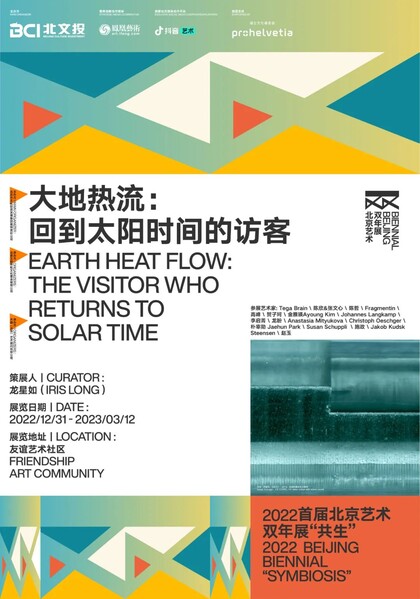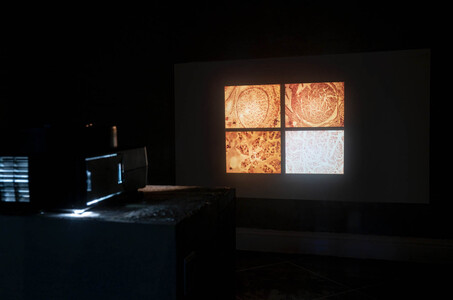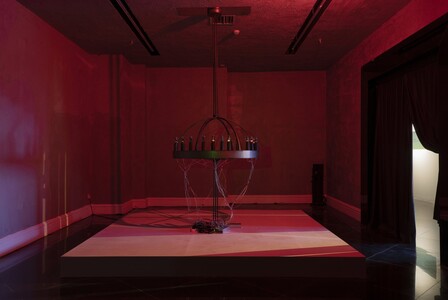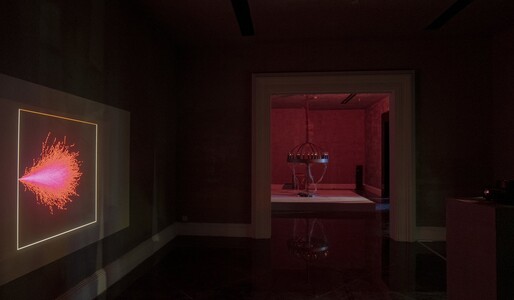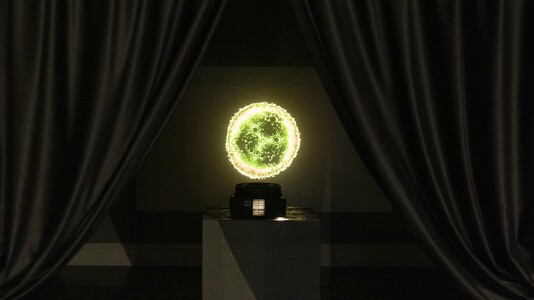Group Exhibition FRIENDSHIP ART COMMUNITY, Beijing
Earth Heat Flow: The Visitor Who Returns to Solar Time
DATES:2022.12.31—2023.3.12
VENUE: FRIENDSHIP ART COMMUNITY
ARTISTS:Tega Brain 陈欣&张文心 陈哲 Fragmentin 高峰 贺子珂 金雅瑛(Ayoung Kim)Johannes Langkamp 李启菁 龙盼 Anastasia Mityukova Christoph Oeschger 朴宰勋(Jaehun Park)Susan Schuppli 施政 Jakob Kudsk Steensen 赵玉
CURATOR: Iris Long
EXHIBITION DESIGN: Shen Jun
CURATORIAL ASSISTANT:Wei Yifeng
The exhibition titled “Earth Heat Flow,” based on the unique winter heating in Beijing, attempts to discuss how to understand the technological culture and ecological status quo through the lens of thermal mediaand invites visitors to take a journey on “melting” from the perspective of dynamic “heat flow.” During the journey, imaginary creatures with heat- synesthesia will experience the daily temperature that human beings are accustomed to, track how heat exists as a foreshadowing of the contemporary scientific and technological system, and speculate on notions of entropy and time - both closely related to “heat.” Each work is included into the “melting” narrative, which may change the object’s shape or reveal hidden things. Melting may be violent or silent, like technology, which is both a dynamic plastic force and a revealing force.
The privileged sunshine in winter of Beijing will be splashed on the “hotter” side of the exhibition hall. The works here discuss how our digital infrastructure (data centers, network switches, and optical fibers) constantly absorb the planet’s energy and build a stable thermal environment. Being Radiotropic describes our dependence on electromagnetic signals with life entities’ reaction to solar radiation. The Copper Tree reminds us how the copper element that supports optical cables and wires is generated from the earth’s veins. Porosity Valley imagines how a living element travels as half a mineral entity and half a digital bit. While Analog Sun Tracking replaces the heated sun in the human visual spectrum with black holes; Saros implies the fatal relationship between the solar flare explosion and the electronic system with a ridiculous fable.
Captured Nature reminds us how the man-made “cold/hot” system continuously supports a more moderate and pleasant living environment. However, these control technologies are also involved in the planet’s natural cold and heat flow for water and wind. Even ocean currents are cooling the roaring machine room, and the neon on which the lithography machine depends also relies on the low-temperature distillation of air by the separation equipment (Do not dwell on that hazy glow). This inlaid relationship of energy, suggesting the fragile and dark side of the man- made technological environment, leads us to the deeper and colder side of the exhibition hall, where the stable environment we created by regulating temperature and heat energy is disturbed and reversed. Life from remote underground servers penetrates people’s skin via liquid (Aquaphobia). Three groups of works related to glaciers depict the history of energy exploitation, cold war facilities, and ancient microorganisms solidified by ice. (The Other Side of Ice, Project Iceworm, Learning from Ice)
When that computer-rendered iceberg collapsed in silence like Greenland Fjord (Melting into time), or the fireworks in the computer quietly bloomed (Fireworks Universe), we seem to feel that the earth naturally contains the potential energy of entropy increases and the desire for reverse entropy, as well as the tension between the two. As Endangered Herbarium tries to store plants’ life, this storage’s effectiveness goes with the sun’s rhythm. In the chaotic zone before the artificial light sources light up (891 Dusks: An Encyclopedia of Psychological Experiences) and after the natural light sources dissipate, when all the machine-generated words become fuzzy lumps with the thermal paper exposed to the air (A Sigh), people stand in the heat flow of the earth again to understand everything carried by our technology and ecosystem and the years witnessed in the vertical space between the solar radiation and the thermal structure of the lithosphere, or, the geographical territory between the polar frozen soil and the equatorial sunshine.
More Pictures:

